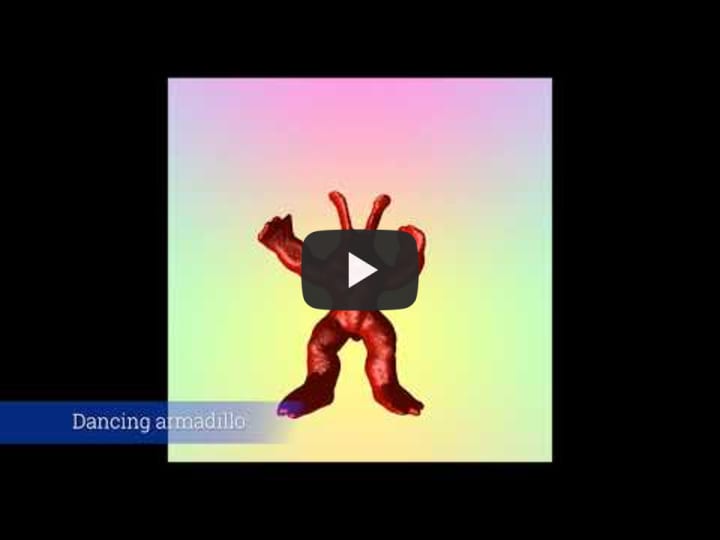Introduction
Simply a bunch of engines that allows the user to simulate and render scenes described into YAML language. This project is originally an assignment for our introduction to image synthesis course, nothing serious.
Samples
Images are more talkative than long texts, so here are few samples of what our engines are capable of:
Here is a demonstration video that shows some rendered scenes:
For further details about the conception of this project, you can watch the french (but subtitled) explanation video available here.
Compile me
- Install rustup: https://rustup.rs/
- Run: rustup install nightly
- In this directory, run: rustup override set nightly
- Run cargo build --release
Warning You need ffmpeg installed to run the full pipeline (last step is the conversion from images to video)
Command-line interface usage
Example
$ cargo run --release -- pipeline data/scenes/eiffel.yaml eiffelVideoThis will run the full pipeline and store a result video in eiffelVideo/output.mp4
For a complete documentation you can use:
$ cargo run --release -- --helpTechnical steps
Our program is composed of a few steps:
- Loading and preprocessing of objects (the time consuming part is computing a signed distance field for the mesh, which is used for collision handling; this part is cached)
- Processing the simulation
- Transformation of the particles into a mesh using a marching cube algorithm
- Rendering of the final scene using a raytracing algorithm
- Image to video conversion using ffmpeg
Rendering time for scene can be very high:
- we made some optimisations, but it's far from being perfect; mainly, some parts could be computed on a GPU
- we use photorealistic algorithms (SPH, marching cube and raytracing) which are greedy enough by nature
Functionalities
All the listed functionalities can be configured in the scene YAML.
We implemented different functionalities in our simulation algorithm, including:
- a pressure solver named Divergence Free SPH (DFSPH); another pressure solver can be easily implemented
- an high viscosity solver (based on
A Physically Consistent Implicit Viscosity Solver for SPH Fluids; 2018; Weiler and al.) - a drag force (based on
Approximate Air-Fluid Interactions for SPH; 2017; Glisser and al.) - an elasticity force (based on
An Implicit SPH Formulation for Incompressible Linearly Elastic Solids; 2018; Peer and al.) - a surface tension force (based on
Versatile Surface Tension and Adhesion for SPH Fluids; 2013; Akinci and al.) - a vorticity force (based on
Turbulent Micropolar SPH Fluids with Foam; 2017; Bender and al.) - multiphase fluids interactions
- fluid-solid interactions (based on
Volume Maps: An Implicit Boundary Representation for SPH; 2019; Bender and al.) - basic solid object engine (using center of mass, inertia tensor and mass as physical properties for objects)
- spray, bubble and foam simulation (based on
Unified spray, foam and air bubbles for particle-based fluids; 2012; Ihmsen and al.) - simulation FPS
We also implemented animation functionalities
- Animated camera
- Animated solid objects (to make, for example, a motor)
- Animated fluid emitters
- Animated wind
- Possibility to add particles using a predefined shape (cube or a mesh)
- Fixed particles, used for example in dancing armadillo scene (cf demonstration video)
Animated objects supports:
- Modification of position, velocity, acceleration, rotation, angular velocity, angular acceleration (and a 'look at' functionnality)
- each of this variables can be set
- each of this variables can be fixed for a certain time
- each of this variables can have a linear progression
- each of this variables can have a progression using a bezier curve
- for motions (linear progression and curve) and fade in and fade out effect can be added
- the system handle animation loops
We implemented functionalities for the marching cube step:
- linear intensity interpolation
- anisotropic kernel for intensity, enabling a more realistic meshing (based on
Reconstructing surfaces of particle-based fluids using anisotropic kernels; 2013; Yu and Turk)
There are also rendering options:
- custom skybox
- custom fluid/solids materials for rendering (allowing diffusion, specular, reflection, refraction, beer law)
- adding an object that does not exist in the simulation
- rendering FPS (allowing slow/fast motion when rendering and simulation FPS are different)
As it was a school project with a limited time, we didn't have the time to implement some of the features we wanted:
- solid-solid interactions (an approach is implemented, but doesn't works well)
- spray and foam rendering
A documentation for scenes configuration doesn't exists, but the scenes in data/scenes folder are exhaustive.
Conclusion
This project took us a lot of time, coffee and health to realize, but we arrived to results we didn't originally expect and looking back, we learned a lot of things.
A special thanks to Jan Bender and Dan Koschier for all their work in the field and more specifically for the paper Smoothed Particle Hydrodynamics Techniques for the Physics Based Simulation of Fluids and Solids that is an excellent introduction to fluid simulation.
BTW, If you wonder where OPR comes from: it's the abbreviation of "On Peut Renommer" (in french), which means "We Can Rename". The day we created the repository, we had no inspiration, and we just forgot to rename the project since then.






